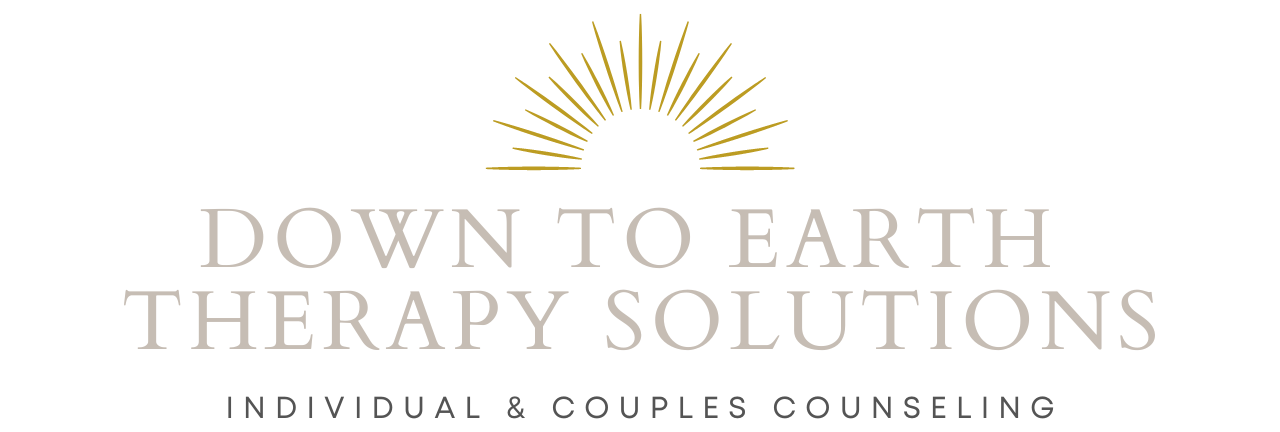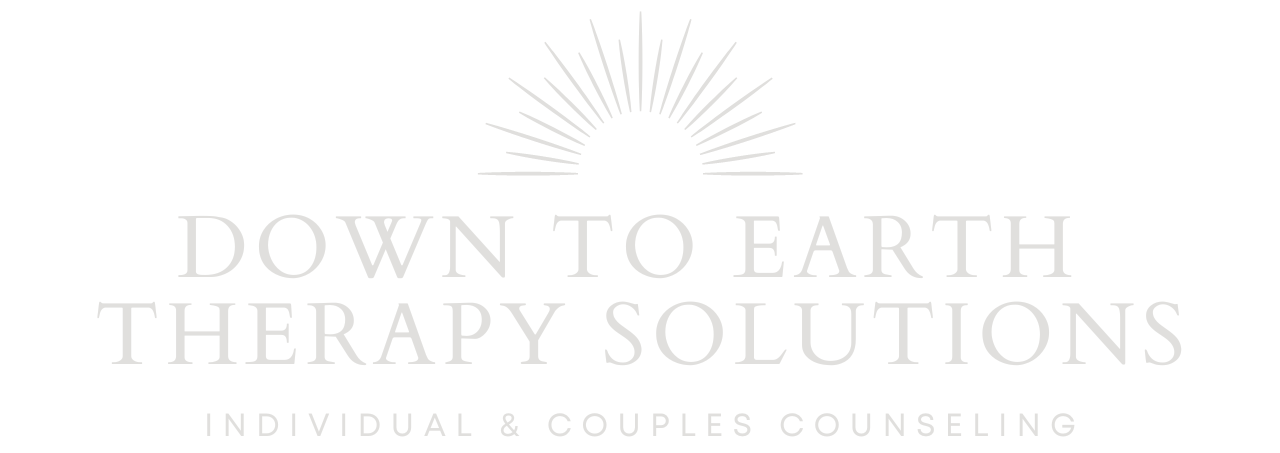Have you ever felt like everything around you is going at warped speed? Everything is moving so quickly and no matter what you do you feel like you can’t seem to catch up? Everything is a constant blur and whirlwind? The world feels like it’s out of control and it’s easy to let the chaos build up?
Yeah, been there. Sometimes it can feel like you have little to no control over the things around you and how overwhelming this becomes, but here’s the thing: YOU CAN FIND PEACE. But only if you know where to look.
Here are some ideas of some simple ways to take back the control and balance in your space and create your own slice of paradise within yourself even when everything else around you feel like its falling.
Step 1: Acknowledge the Chaos
Being more grounded means you must admit that things are overwhelming. It seems weird that we want to feel less overwhelmed but need to admit it first? Sometimes the power of just admitting and acknowledging what you are experiencing is a first step towards facing what you are experiencing rather than trying to avoid it or pretend it isn’t happening. Normalize for yourself that everyone has times that they feel overwhelmed, and this feeling is not unique to just you. Telling yourself that other people handle stress better or don’t experience as frequently as you only serves to set you up to feel guilty about normal emotions that everyone has at different times in their lives.
Don’t pretend you have it all together not that you’re not bothered or upset. Acknowledge things are a bit crazy to help you name what you are experiencing. Naming it and acknowledging your feelings helps you take control of how you decide to respond. Trying to avoid or fight it just serves to prolong the intense overwhelming feelings. Instead, try this: say to yourself, “Right now, things are crazy, but it’s going to be okay. I need to focus on what I can control and I can handle this.”
Step 2: Find Your Center
Here’s where it gets good: finding something that keeps you grounded. What does that even mean “grounded”? When we talk about being grounded, we’re talking about engaging in a self-soothing technique to keep you in the present (or right now) and reorient you to being able to focus on the things you’re experiencing in this moment and not be stuck all in your head of the things that already happened or the things that need to happen that haven’t yet.
The act of grounding yourself is unique to each person so finding something that fits you is important. Regardless of what this self-soothing technique might be, the goal is to create an opportunity for yourself that is just yours and a moment of calm within the storm of life.
Here are some examples of grounding activities that you can try:
- Taking a 10-minute walk: Nature, for some can have a magical way of creating relaxation. While on a walk in nature focus on some things. What do you hear? What do you see? Try hard at being able to describe these things as if you were describing them for someone who wasn’t there. It’s not just a big tree you walked by. It was a big tree that was full of thick green leaves that were shaped in an oval pattern, etc. The more descriptions you have the more grounded you are allowing yourself to be.
- Breathing exercises or meditation: We know when people get overwhelmed or anxious 2 things typically happen with how we breathe. One is someone might start breathing faster than usual leading to our nervous system going on overdrive. The other thing is people might hold their breath and take in less breathes once again causing our nervous system to go into overdrive. Focusing on your breath for a few minutes can help calm down your system. Easy and rhythmic in and out breaths. It sounds simple, but it’s powerful. Give breathing techniques and exercises time. Although these are simple, they are difficult to fully engage in and keep with. It’s about finding something that can help you soothe but this also means working on practicing these things regularly. Find an app that might display some different breathing techniques to try and see if anything fits.
- Creative hobbies: Whether it’s drawing, cooking, journaling, or knitting, doing something creative can help your mind focus and calm down. Be creative to just be creative or to do something that you can enjoy. Allowing your system to engage in an activity that can allow for free thoughts or freedom in your experiencing helps create balance within the chaos. Doing things that we “should be doing” doesn’t work here. Now is a time to create and calm, not keep fulfilling the obligations we have that likely are adding to our stress and chaos.
- Listening to your favorite music: Music has a unique way of soothing our minds and putting us in a good mood. Maybe it’s time to explore something new for music and try a new genre or new artist. Listening to only instrumental music or music that have different frequencies to them can help calm our nervous system without even realizing it. Finding a track that has 432 Hz frequencies report being able to heal. There are so many options and things to explore within music it’s worth a listen.
- Spending time with a pet: Pets are experts at making us feel loved and grounded. Taking some extra time with Fido for a walk or teaching them a new trick might be what’s needed. Even a good nap with your best friend can increase your ability to face the next challenge with a difference sense of balance and peace.
Find what works for you. The suggestions above might work for some, but not all. The main message is that this is all about taking a break from the noise and giving your mind a moment to reset and reboot.
Step 3: Let Go of What You Can’t Control
So, here’s the hard and unpopular truth: There’s a lot of stuff in life you can’t control. Traffic, the weather, people’s moods, people’s behaviors, your boss, gas prices, or global events—they’re all outside of your hands. But what you can control is how you respond to these things.
Focusing on all the thigs that we cannot control leads to more chaos within us. I can be stressed out that a hurricane is coming. Watching the news about it for 12 hours straight isn’t going to change that a hurricane has formed and it’s going to have landfall. Instead of stressing over everything that’s out of your reach, focus on what’s within your control. Choose where you put your energy and what you can do. In the example of a hurricane that formed and will make landfall I can control what resources I have already, what I need to get, and then do just that, prepare.
If something is stressing you out that you can’t change, try to mentally “set it down.” It’s like holding a heavy box—at some point, you have to put it down, or you’ll wear yourself out. The box will still be there, even if I set it down for a minute or two. Taking that break can allow me to manage the heavy box better rather than trying to push through it and exhaust myself.
Step 4: Create Healthy Boundaries
Life can feel chaotic when we don’t have limits in place. When we say yes to things we want to say no to and when we overextend ourselves far past our means. Setting boundaries is all about protecting your mental health and giving yourself permission to say “no” when you need to. This could mean saying no to extra work or stepping back from people in your life that you feel more drained rather than invigorated after interacting with.
Think of boundaries like walls around your personal space. They help you stay safe and focused. By protecting your energy, you’re giving yourself the chance to be more present in the moments that truly matter.
Expressing and setting boundaries seem easy in theory but can be difficult to identify, set, and enforce overall. These are things to evaluate overtime and begin a journey of self care for your time, space, and energy overall.
Step 5: Find Support When You Need It
Sometimes, we need a little help to find our peace. We feel like we have tried everything that we can think of. It’s okay to reach out to a friend or loved one when things are feeling overwhelming. Actually, it’s suggested. You don’t have to face things alone and you are worthy of help and support. Whether you need a listening ear or just some advice, talking things out with someone you trust can give you fresh perspective. This can also be a place that Step 4 comes back up where you set a boundary of what you need. If you just need someone to listen so you can work on the chaos out loud, you need to communicate this. If you’re looking for ideas tp throw around and consider, say that. One can feel unsupported if they need a good listening ear and instead they get unsolicited advice.
Don’t be afraid to ask for the support you need. Asking for what you need assertively is a sign of inner strength. Others often see this as a weakness; however, we all need help sometimes. Plus, when you open up, it can help you feel connected and less alone in the midst of everything. YOU ARE NOT ALONE. You’re asking for help might be role modeling for others ways to be more vulnerable and connect in deeper ways too.
Step 6: Slow Down in Small Ways
Yes, life is busy, and it moves fast. It seems like it moves even faster the older we get. But there are ways you can slow things down, even when you stack your schedule to the brim. Here are a few tricks:
- Single-tasking: Multitasking can make you feel like you’re getting more done, but it can actually increase stress. Try focusing on one thing at a time. When you focus on one task at a time and accomplish or finish the task you get some feel good hormones released in your system thus calming your system down without even knowing it.
- Practice gratitude: Take a moment every day to acknowledge something you’re grateful for. I know this sounds so cheesy but the more we do this and focus on the positive or good things the less time and energy we give to the negative or chaotic things. It helps us be able to let chaos roll off us. It could be something small like a warm cup of coffee or the sunshine. Gratitude helps you shift focus from stress to the positive things in your life.
- Take breaks: Whether it’s five minutes of stretching or a quick walk outside, giving yourself mini-breaks throughout the day helps you recharge. A mini read of a book or article can increase microlearning rather than escaping and avoiding through social media outlets that can bring their own stress bubble to your space. Taking these breaks helps rest our system and create less internal struggles along the way. Don’t convince yourself you don’t have time. You DO have time and you ARE worth that time to slow down.
Step 7: Embrace Imperfection
Finally, remember that perfection doesn’t exist. We live in a world that often pressures us to do more, be more, and have more. But real life isn’t perfect, and that’s okay. Social media can present an image that others have which can instill guilt in our own lives and situations. Remember, people show us what they want us to see on social media. We see the perfectly curated photo, not the multiple photos that were taken before this one was posted or what the reality of someone’s life is.
Embrace the messiness of life, that’s what makes you interesting. Some days will be better than others, and that’s part of being human. Instead of chasing after perfection, aim for progress and growth. Progress and growth you have with yourself, not anyone else. It’s about finding peace with where you are, rather than where you think you should be.
Your Slice of Heaven
So, when the world is going a million miles a minute and you feel like you’re running to keep up, remember: You don’t have to keep up with the chaos. You can create your own slice of heaven by finding what grounds you, setting boundaries, letting go of what you can’t control, and focusing on the small things that bring you peace.
Take things one step at a time and know that you’re not alone in this journey. Amid the whirlwind that we call life; there’s always a way to find balance—your own way.
Take care of yourself. You deserve it.




